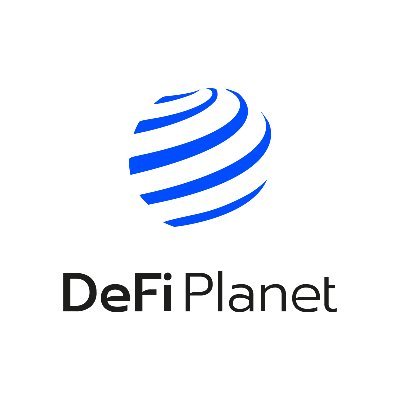


Preço de VisionGameVISION
Conversão de VISION para EUR
Como é a sua opinião sobre VisionGame hoje?
Sobre VisionGame (VISION)
VisionGame Token: Uma visão geral
Contexto histórico do surgimento das Criptomoedas
Em 2008, a influência e a sofisticação da tecnologia no mundo financeiro deram um salto sem precedentes, quando um indivíduo ou grupo de indivíduos sob o pseudônimo de Satoshi Nakamoto concebeu a primeira criptomoeda do mundo, o Bitcoin.
Desde então, uma série de criptomoedas foram implementadas, derivadas do espírito descentralizado e autônomo que o Bitcoin tornou possível. Da mesma forma, a criptomoeda VisionGame Token nasceu desta nova onda, com a promessa de trazer inovações significativas para a indústria de jogos.
O que é VisionGame Token?
A VisionGame Token é uma criptomoeda voltada especificamente para a indústria de jogos online. Ela permite a facilidade de transações dentro de plataformas de jogos, a aquisição de recursos em jogos e até mesmo a monetização do tempo gasto em jogos. Além disso, oferece um ambiente seguro e transparente, graças à tecnologia Blockchain.
Principais funcionalidades
Entre as principais funcionalidades do VisionGame Token estão:
-
Segurança e transparência: os jogadores podem ficar tranquilos sabendo que seus ganhos e transações estão 100% seguros e verificáveis dentro da rede Blockchain.
-
Descentralização: essencialmente, o VisionGame Token permite que os jogadores mantenham o controle total de seus ativos em uma plataforma descentralizada.
-
Economia de jogo inovadora: o modelo de economia introduzido pela VisionGame Token veio para reinventar o modo como os jogadores ganham e gastam em jogos online.
Significado histórico das criptomoedas
Além de revolucionar o setor financeiro tradicional, as criptomoedas estão abrindo caminho para inovações em várias áreas da nossa vida cotidiana.
O surgimento do Bitcoin em 2008 foi apenas o começo de uma nova revolução que ainda está em andamento. Desde então, a criptoeconomia impactou várias indústrias -assistência médica, imobiliária, comércio eletrônico, entre outros.
A indústria de jogos online não é exceção. O VisionGame Token exemplifica o casamento lucrativo entre tecnologia Blockchain e jogos online - incentivando uma economia de jogos mais equitativa, transparente e rentável.
Em resumo, a história das criptomoedas está sendo escrita e reescrita todos os dias. Elas estão assumindo um papel cada vez mais importante na definição de como interagimos, gastamos e ganhamos dinheiro. Com o VisionGame Token representando mais um passo em direção à descentralização e controle pelos usuários, o impacto que as criptomoedas terão no futuro está se tornando ainda mais significativo.
Relatório de análise de IA sobre VisionGame
Preço de hoje de VisionGame em EUR
Histórico de preços de VisionGame (EUR)
 Preço mais baixo
Preço mais baixo Preço mais alto
Preço mais alto 
Qual é o preço mais alto do token VisionGame?
Qual é o preço mais baixo do token VisionGame?
Previsão de preço do token VisionGame
Qual é o melhor momento para comprar VISION? Devo comprar ou vender VISION agora?
Qual será o preço do token VISION em 2026?
Qual será o preço do token VISION em 2031?
Perguntas frequentes
Qual é o preço atual de VisionGame?
Qual é o volume de trading em 24 horas de VisionGame?
Qual é o recorde histórico de VisionGame?
Posso comprar VisionGame na Bitget?
É possível obter lucros constantes ao investir em VisionGame?
Onde posso comprar VisionGame com a menor taxa?
VisionGame - Total de ativos por concentração
VisionGame - Endereços por tempo de manutenção

Preços globais de VisionGame
- 1
- 2
- 3
- 4
- 5
Como comprar VisionGame(VISION)

Crie sua conta na Bitget gratuitamente

Verifique sua conta

Converter VisionGame em VISION
Opere futuros perpétuos de VISION
Depois de abrir sua conta na Bitget e comprar tokens USDT ou VISION, você pode começar a operar derivativos, como futuros de VISION e operar com margem para aumentar sua renda.
O preço atual de VISION é €0.0006045, com uma variação de preço em 24 horas de +2.81%. Os traders podem lucrar com um posições long ou short em futuros de VISION.
Siga traders de elite e faça Copy Trade de VISION.
Novas listagens na Bitget
Comprar mais
Onde posso comprar VisionGame (VISION)?
Seção de vídeos: verificação e operações rápidas

Conversão de VISION para EUR
Recursos de VISION
Tags:
Avaliações de VisionGame
Bitget Insights





Ativos relacionados
Informações adicionais sobre VisionGame
Visão geral da moeda
Relacionado a moedas
Relacionado ao trading
Atualizações de moeda
Operar
Earn
BTC/USDT
SpotBTC/USDT
MargemBTC/USDT
Futuros USDTBTC/USD
Futuros Cripto
































